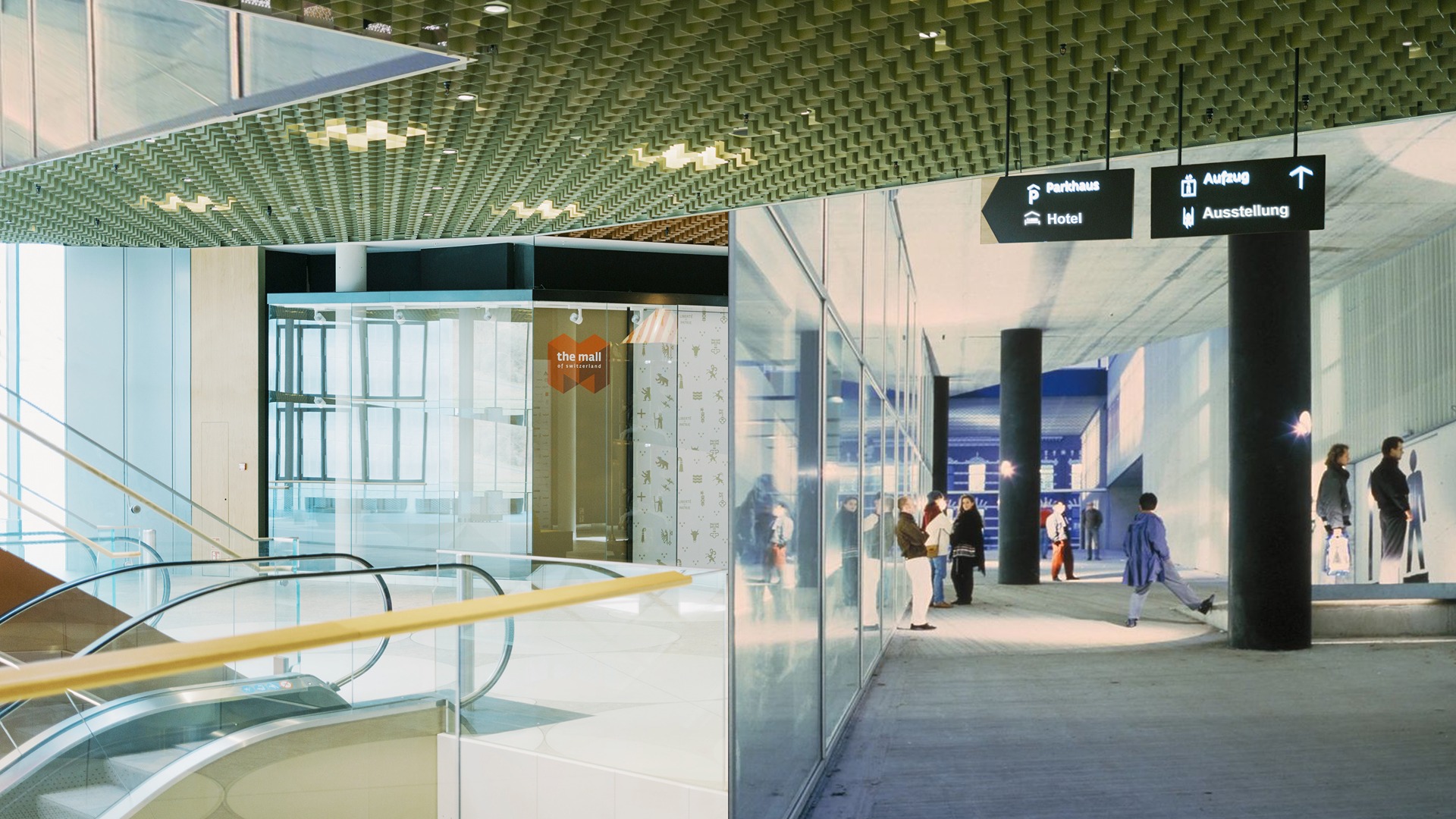 Kunstmall, Mall of Switzerland (© NZZ) x Kunsthal by OMA (© Hans Werlemann)
Kunstmall, Mall of Switzerland (© NZZ) x Kunsthal by OMA (© Hans Werlemann)
Modulverantwortung: Céline Bessire, Steffen Hägele, Tina Küng, Matthias Winter
Lehrteam: Céline Bessire, Steffen Hägele, Tina Küng, Matthias Winter
Assistant: João Moreira
DEAD MALL
THE TWILIGHT OF ‘BIGNESS’
‘To consume is to work’—in the radical understanding of a capitalist society good citizens are consumers. Following this logic, the shopping mall became the icon of a lifestyle and the nucleus of a global urbanization phenomenon. But retail is in deep crisis and the corresponding building stock faces an uncertain future. Despite this trend, the Mall of Switzerland opened its doors in 2017. Today its economic future is questionable – leaving us with the foreseeable challenge of a shopping ruin.
This semester we tackle the Mall of Switzerland by turning its decline into a momentum for alternative architectural scenarios. The mall reaches a state of twilight, of softness and formability, of ending and beginning, oscillating between demise and resurrection. Rem Koolhaas argued that “Bigness is no longer part of any urban tissue. It exists; at most, it coexists. Its subtext is fuck context.” The Mall of Switzerland radically embodies these features and represents a late incarnation of ‘Bigness’. Today’s task is not anymore to use ‘Bigness’ as a tabula rasa strategy against sprawl, but to make use of its sheer existence in the urban realm. It is time to transform, to entangle and to resurrect ‘Bigness’.
We will study ‘Bigness’ and its specific forms of organisation. This allows us to manoeuvre and rechoreograph the vast body of the mall. We will follow specific tactics to create spatial hybridity and programmatic simultaneity, economic efficiency within spatial generosity, logistic hierarchy and spatial indeterminacy. In parallel, we analyse the current mechanics of the Mall of Switzerland as well as the factors and stakeholders that are involved in its functioning such as logistics, maintenance, energy fluxes, economic dependencies, building components, etc. This enables us to strive for an architecture that incorporates hyper-dense programs and collective forms of inhabitation and hybridity. Projects will speculate on how to transform the remnants of what used to be a well-tempered, well-contained environment by making a case for architecture that reclaims ‘Bigness’ and accommodates a variety of mixed programs and diverse forms of living.
Events
Thursdays, Atelier F400